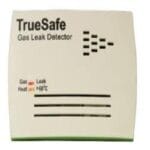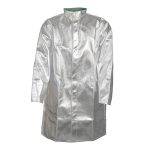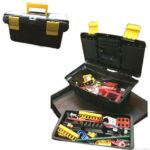Your list is empty, add products to the list to send a request
What Is the Sensitivity of the Simplex Smoke Detector?

30
Apr
Modern fire detection systems rely on high-sensitivity smoke detectors to provide early warning and save lives. One of the most trusted names in this field is Simplex, a brand known for delivering intelligent and responsive smoke detectors that meet stringent global standards.
Simplex smoke detectors are a core offering from Firesupplies, the online distribution arm of South Fire Systems Pvt Ltd, committed to making building and human safety a priority across India.
Whether you’re protecting residential towers or high-risk industrial sites, understanding detector sensitivity is vital. In this guide, we’ll uncover what makes the Simplex Multi Sensor Detector with Base so important, how it’s measured, tested, and maintained for compliance and reliability.
Understanding Smoke Detector Sensitivity
Smoke detector sensitivity refers to how readily a detector can identify smoke particles in the air. The more sensitive the unit, the quicker it responds to potential fires.
This sensitivity is often measured as a percentage of obscuration per foot (%/ft) or in decibels per meter (dB/m). High-sensitivity detectors can detect even the faintest trace of combustion, making them ideal for areas requiring early detection like hospitals, laboratories, and data centers.
What is a Simplex Smoke Detector?
Simplex is a product line under Johnson Controls, a global leader in building safety systems. These detectors are widely installed across schools, factories, airports, and commercial buildings. With microprocessor-based logic and programmable sensitivity settings, Simplex detectors ensure tailored protection based on specific environmental needs.
Their popularity stems from consistent performance, reliable alarms, and integration capability with advanced addressable fire alarm panels.
Why Sensitivity Matters in Fire Alarms
Here’s why sensitivity is crucial:
- Faster Response: Detects fires at an incipient stage.
- False Alarm Reduction: Adjusts sensitivity to avoid unnecessary alerts.
- Compliance: Helps meet NFPA and Indian fire code regulations.
- Peace of Mind: Protects lives and property with precision.
Simplex Smoke Detector Sensitivity Explained
Most Simplex smoke detectors are rated to detect smoke particles in the range of 0.5% to 4.0% obscuration per foot. Specific models, like the Simplex 4098-9714, can be field-configured to different sensitivity levels depending on the application.
Advanced models can be auto-calibrated for day/night sensitivity using panel settings, which increases flexibility and reduces maintenance errors.
Simplex Duct Detector Sensitivity Range
Duct detectors are special smoke detectors installed inside HVAC ducts. The Simplex 4098-9755 duct detector has a sensitivity range of 1.5% to 2.5% obscuration/ft, which balances responsiveness and resilience to dust or air turbulence.
Such detectors are critical for air-handling units, where early smoke detection prevents recirculation of smoke throughout a building.
Types of Smoke Detectors by Simplex
- Photoelectric Detectors: Best for slow-burning fires
- Ionization Detectors: React faster to fast-flaming fires
- Combination Detectors: Dual sensors for versatile detection
- Heat Detectors: Supplementary protection for high-temperature zones
How Smoke Detectors Measure Sensitivity
Simplex detectors use:
- Infrared light scattering to assess particulate levels
- Obscuration calculations to determine smoke density
- Microprocessor logic to reduce nuisance alarms
How to Calculate Smoke Detector Sensitivity
To calculate detector sensitivity, the formula used is:
Obscuration (%) = [1 – (Transmitted Light / Initial Light)] x 100
Technicians use smoke meter test tools or the in-built sensitivity readouts from fire control panels. For Simplex, the exact percentage is typically read and adjusted via the control panel software.
Smoke Detector Sensitivity Testing Protocols
NFPA 72 mandates that detectors must be sensitivity-tested within 1 year of installation and every 2 years thereafter. Acceptable ranges must remain within:
- Photoelectric Detectors: 1.5% – 3.5% obscuration/ft
- Ionization Detectors: 0.5% – 4.0% obscuration/ft
Tests include:
- Calibrated Smoke Testing
- Magnetic Sensitivity Tools
- Control Panel Diagnostics
- Fire alarm system installation
- Sensitivity settings and testing
- Maintenance intervals
- System documentation
Frequently Asked Questions:
1. What is the sensitivity range of the simplex duct detector?
A: Most Simplex duct detectors operate within 1.5% to 2.5% obscuration per foot, ensuring adequate sensitivity without being prone to false alarms from airborne particles in ducts.
2. How to calculate smoke detector sensitivity?
A: Use a calibrated light source and measure the reduction in light transmission through smoke. Or, access the sensitivity reading via the fire control panel where detectors like Simplex store calibrated values.
3. What is the most sensitive smoke detector?
A: Aspirating smoke detectors like the VESDA-E series can detect smoke at levels as low as 0.0015% obscuration/ft, significantly more sensitive than standard detectors.
Conclusion
Ensuring the Simplex smoke detector sensitivity is within prescribed limits is not just a compliance requirement—it’s a moral and professional obligation to protect lives.
Firesupplies, established by South Fire Systems Pvt Ltd, is committed to delivering reliable, high-sensitivity fire detection solutions across India. From expert support to high-quality inventory, we’re your trusted partner in life safety.
Looking for expert advice or need help choosing the right fire detection system?
Contact Firesupplies today for customized support and India-wide delivery of certified Simplex smoke detectors and fire safety equipment.



























